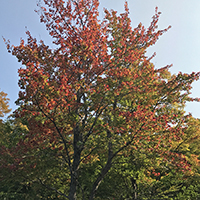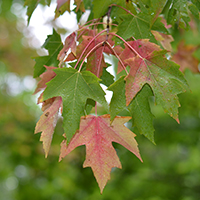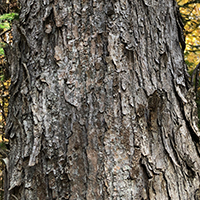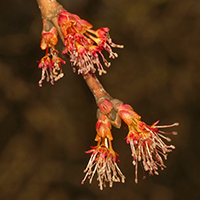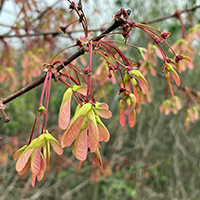What red maple looks like
Size and shape
- Reaches 25 metres high.
- Trunk grows up to 1 metre in diameter.
Leaves
- Light green with sharp teeth.
- Have 3 to 5 lobes separated by shallow notches (5 to 15 centimetres).
- Turn bright red in fall.
Bark
- Smooth, light grey bark when young.
- Becomes dark greyish brown with flaky peeling ridges with age.
Flowers
- Individual flowers with 5 small petals grow in clusters on slender stalks.
- Bloom in late winter to early spring before leaves appear.
Fruit
- Winged keys contain 2 seeds in swollen seedcase (wings 12 to 25 millimetres).
- Keys mature in early summer.
Where red maple is found
Red maple is found in Southern Ontario north to the southern edge of the boreal forest.
What you need to know to grow red maple
- Moisture: grows best in wet soils, but tolerates some drought.
- Soil: grows in acidic, loamy, sandy, silty and clay soils.
- Shade: grows best in full sun.
- Caution: red maples can be weak and are prone to cracking bark and overcrowding branches. Trees are susceptible to damage during storms. Light pruning can help protect the tree.
Benefits and uses of red maple
Wildlife benefits
Red maple keys are a food source for squirrels and other rodents. The shoots and leaves are eaten by white-tailed deer and rabbits.
Commercial uses
Red maple wood is soft and can be used to make:
- flooring
- furniture
- clothespins
- musical instruments
- boxes
Red maples are easy to grow and are often planted as an ornamental tree due to their brilliant fall foliage.
Fun facts about red maple
- Red maple trees live up to 100 years.
- Red maple sap can be used to make maple syrup.
Updated: November 22, 2023
Published: July 18, 2014
